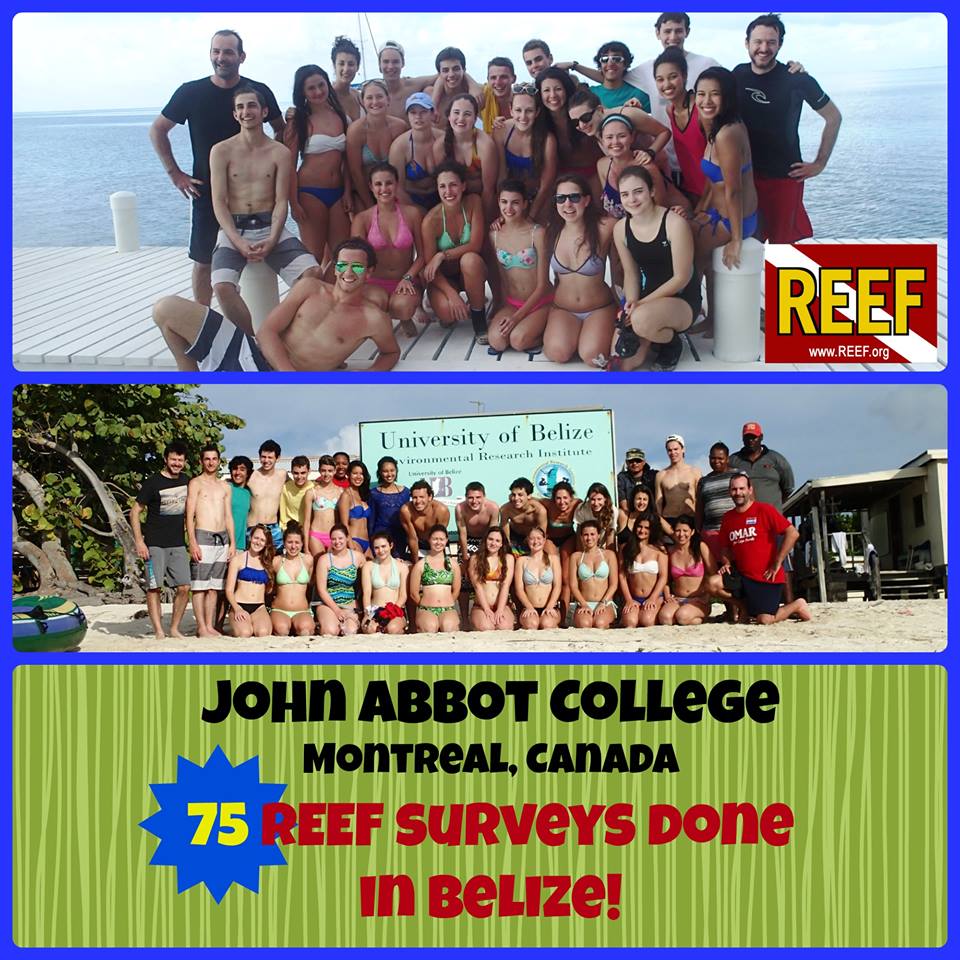
This project was done as part of a CEGEP course on marine biology. The course took 24 students to the central American country of Belize to work at the University of Belize’s Environmental Research Institute for two weeks in January. Belize is home to the second largest barrier reef in the world, making it an ideal location to study reefs and the marine life associated with them.
Before leaving for Belize, all the students had to undergo some predeparture training. We had several lectures on fish anatomy, reef biology, and oceanography. We did pool training to practice with the equipment we would be using in the field. We also had to study the field guide, a book put together by the students who take this course. When I took this course, there were roughly 100 species of fish that we had to learn to recognize on sight.
The research center was quite basic. There a couple of dormitories, a cafeteria, a work building/laboratory, and an equipment shed. They were all built on stilts about 50 m from the water. The rest of the island was covered by dense brush, which was apparently filled with alligators. Most things on the island were solar powered and non-drinking water came from collected rain runoff.
Our work consisted of three main tasks:
- Estimating the population of species of fish in various areas
- This was done by conducting a survey of the area by swimming around for 2 minutes and noting down on waterproof paper the approximate population of all species of fish seen (1, 10, 50, >100).
- Photographing, identifying and cataloguing new species of fish and coral to add to the field guide
- Removing and studying an invasive species called lionfish
- The lionfish is a species that is native to the reefs around Indonesia that was somehow introduced to the tropical waters in the western Atlantic around 20 years ago. Since then, the population has exploded and spread, threatening the biodiversity and health of coral reefs by disrupting the established food chains. Lionfish are voracious eaters, reproduce frequently and have no natural predators in the Atlantic. The lionfish were caught on sight, then brought back to the island to measure and dissect them.
We also conducted several smaller experiments such as studying the growth of the sea grass, the turbidity of the water, and the plankton around the island.
At the start and end of our trip, we took some time to explore the country and to take in the local culture. Near the city of San Ignacio, we visited a cave system which was used by the Mayan civilization. To reach the caves, we had to trek through the jungle and then swim across a river. Inside the caves, we saw pots and stone knives in the various chambers of the cave, as well as human bones from the ritual sacrifices the Mayans performed. We also had the time to take a boat from the capital, Belize City, to a popular tourist destination called Caye Caulker. We took a sail boat tour of a popular section of the barrier reef and impressed the local guide with our knowledge of the fish and coral species.
This was a spectacular experience, with great teachers and great students, that I will remember for the rest of my life. I got to meet many interesting people and do some fantastic things. And the best part was I got school credit for it.